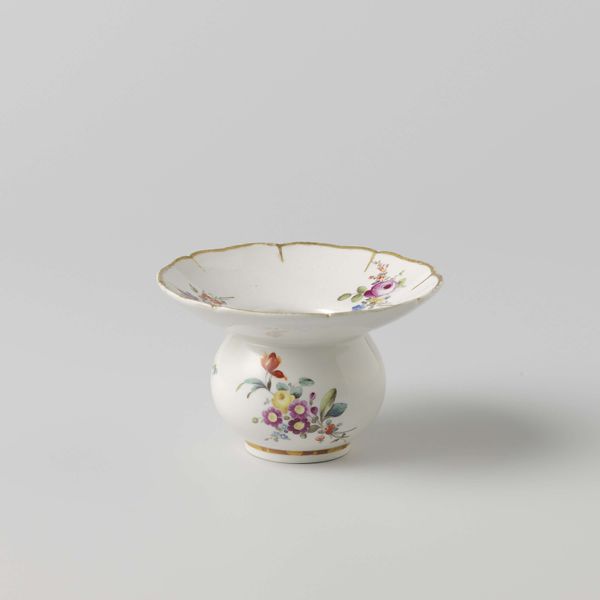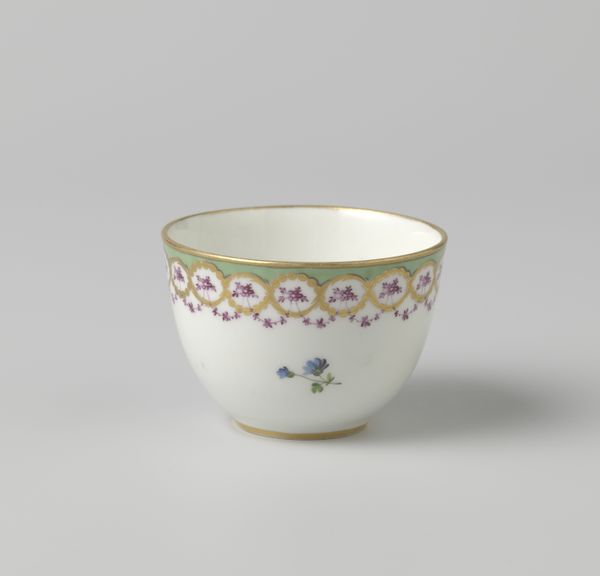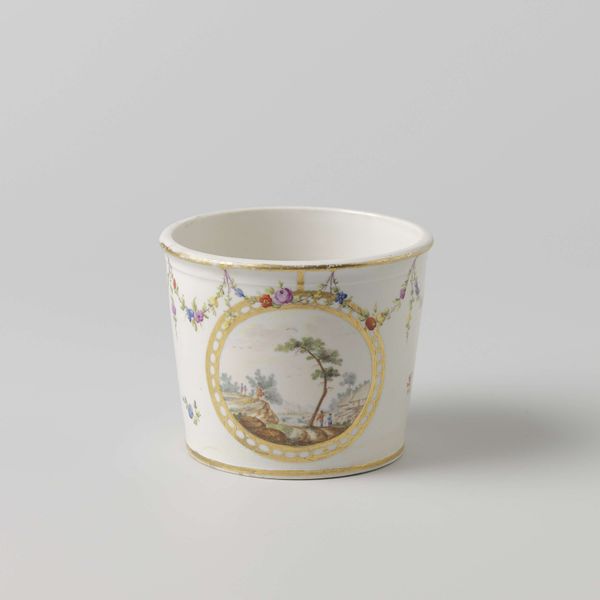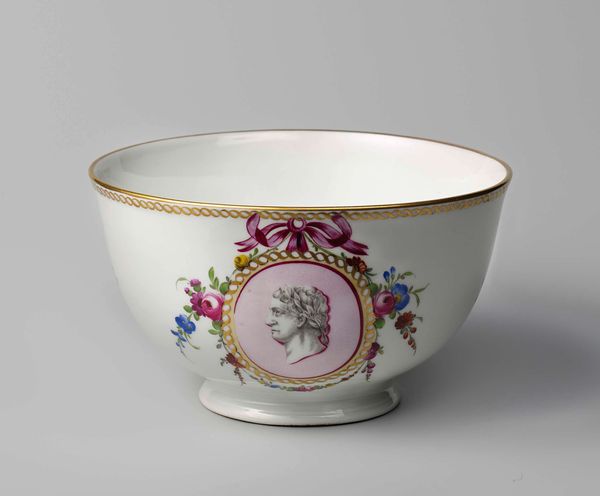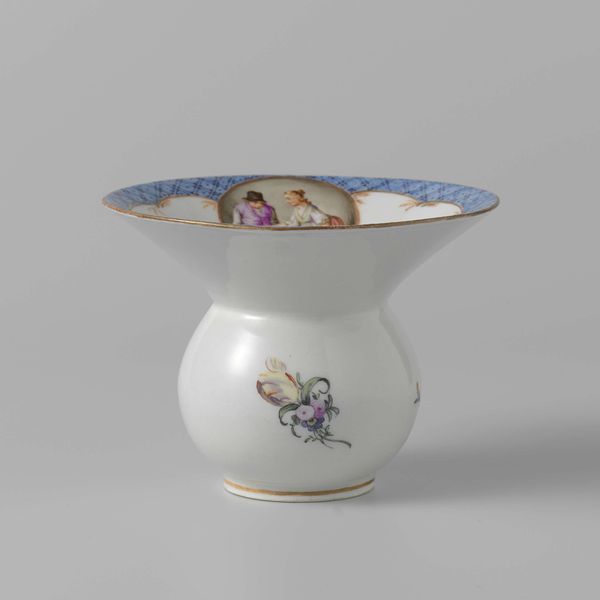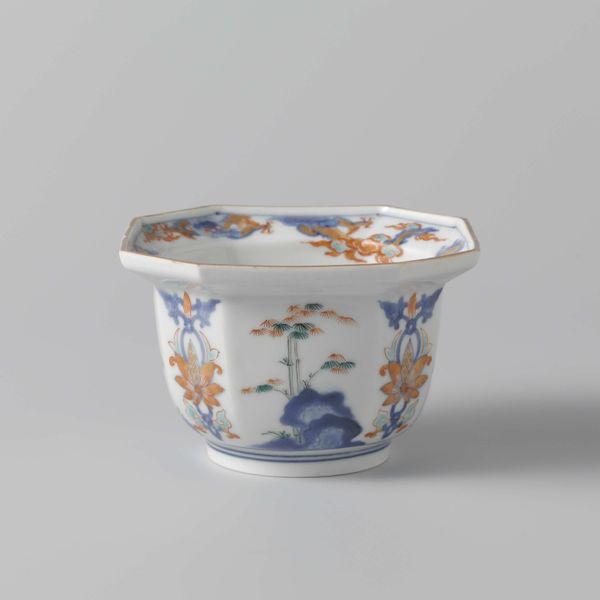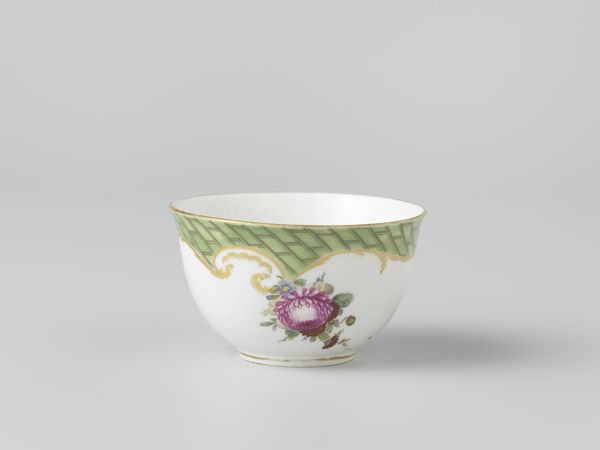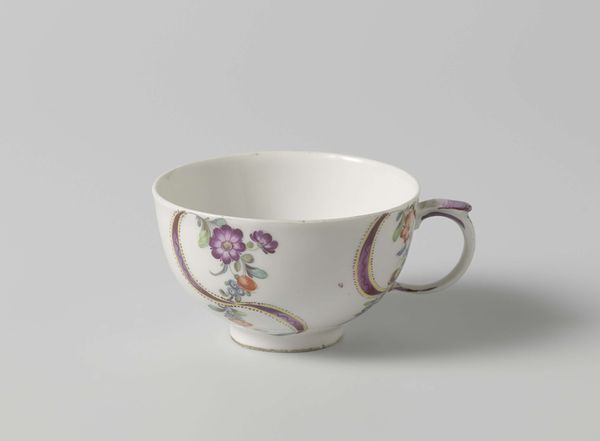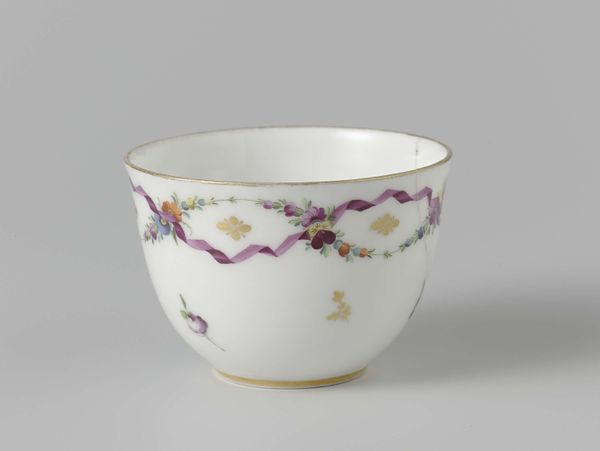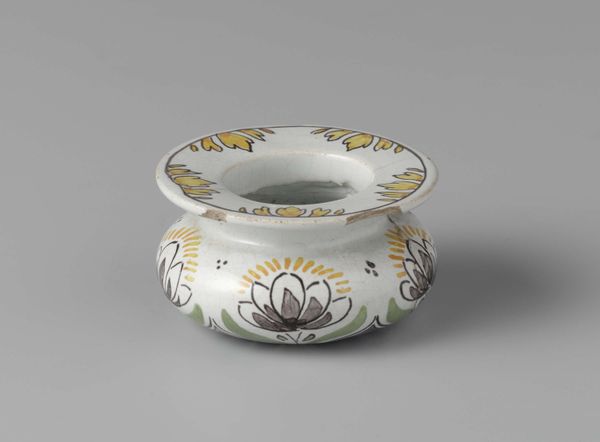
Cup with a bouquet and a border of medallions, garlands and foliate scrolls c. 1790 - 1800
0:00
0:00
Dimensions: height 5.3 cm, diameter 5.6 cm, diameter 6.1 cm, diameter 4 cm, width 7.7 cm
Copyright: Rijks Museum: Open Domain
Curator: This ceramic cup, believed to have been crafted between 1790 and 1800, showcases the Rococo style, a favored aesthetic of the era. It’s ornamented with a bouquet encircled by medallions and foliage. Editor: It’s daintiness itself! The shape is almost squat, which feels very grounded in contrast to the fussy, frilly decoration. Makes me want to pick it up and see how it feels in my hand. Curator: Absolutely, and pieces like this offer insight into the prevailing cultural tastes and consumption habits of the time. The presence of ceramic also illustrates shifts in global trade networks and artisanal production that developed during that time. Editor: I wonder about the artisan’s process. This must have been so labor-intensive – the molding of the ceramic, the delicate painting, the firing… What were the social conditions for pottery workers in that era? Were they seen as craftspeople or artisans? Curator: That’s key, the Rococo movement, while celebrated for its aesthetic charm, emerged from a hierarchical society with strict divisions of labor. A cup like this probably appeared at upper class tea parties. Examining decorative arts provides insight into that history, how artistry intertwined with social function. Editor: I'm also struck by the contrast between the smooth, refined porcelain and the implied textures of the flowers and foliage. They have rendered a bouquet as if plucked right out of nature on this refined cup, the floral arrangement in a golden frame as if painting and craft met one another. Curator: Precisely, that framing draws our eye in. Its very composition reflects deliberate aesthetic choices. A combination of skill, knowledge, taste, and access dictated what got created and circulated as ‘art.’ Editor: The gilding is particularly interesting. Was that a mark of high quality, or was it merely decorative flash? I imagine the social signal conveyed through the gold on ceramic would be one of wealth. Curator: Both, perhaps. This cup invites us to ponder the relationship between aesthetics, economics, and the quiet narratives of history. Editor: And I’ll be thinking about all of the hands that touched this vessel across centuries, from creation to consumption to observation today.
Comments
No comments
Be the first to comment and join the conversation on the ultimate creative platform.
